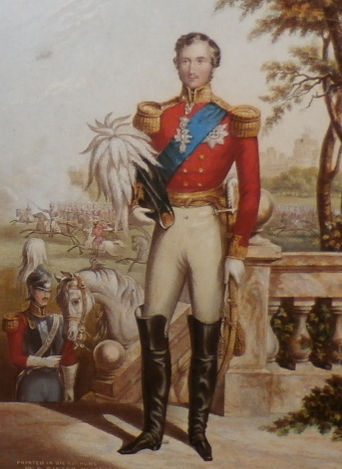
George Baxter’s Prince Albert (CL 205) – Thomas Jackson’s Cachou Aromatise
Click on images to show an enlargement in a new window
1) an image of the outside of the box 2) George Baxter's Print CL 205, slightly trimmed to match the visible image on the box lid 3) The inner pull out draw 4) Instructions for using the Albert Gate Latch 5) Close up of the printing method 6) An advert from the official catalogue of the Great Exhibition 1851
A friend of GeorgeBaxter.com from America wrote to us recently sharing details of a recent purchase, a box of ‘H.R.H. Prince Albert’s Cachou Aromatise’ or breath mints showing what appears to be a reproduction of Baxter’s print H.R.H. Prince Albert (CL 205) on the lid with a pull-out inner drawer. A full detailed study of CL 205 can be found by following the link at the bottom of the page
Around the edge of the box is stated ‘Refreshes the Mouth - Sweetens the Breath’ and at the foot ‘Prepared by Thomas Jackson, Manchester Great Britain.’ The image shows an excellent likeness to Baxter’s print and at the bottom left, where Baxter would have originally signed his print, is now ‘Registered Trade Mark’. The image has been slightly clipped both in height and width compared to the actual print. The Baxter print when full size is 14.8 x 9.8 cm but if ‘trimmed’ on all edges to replicate what we see on the box lid it would be 12 x 8.6 cm. The image on the box is 15.2 cm x 11.5 cm so has been slightly enlarged. The overall size of the box is 16 x 12 x 1.5 cm.
The breath mints are normally seen being advertised in small little circular tins with the ‘Albert Gate Latch (Registered) being Thomas Jackson’s contrivance for paying out the cachoux singly’. His Albert Gate Latch appears to have been patented in 1869.
I can find these breath mints being advertised as early as 1851 at the Great Exhibition right up to Chicago Exhibition in 1893 and perhaps a little later.
The purpose made tins with ‘The Albert Gate’ are only about 3.5 cm across so this box would have held quite a large number of mints for the bulk purchaser or, which is I feel more likely, a shop display containing a number of these tins. Instructions on how to use the dispenser is on the underneath of the box. We have no idea who printed it but it appears to be a Chromolithograph from the close up and, unless anyone can advise, appears to date from the latter years of the 19th century.





